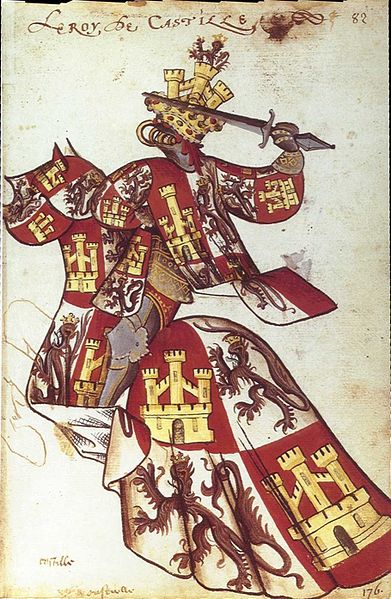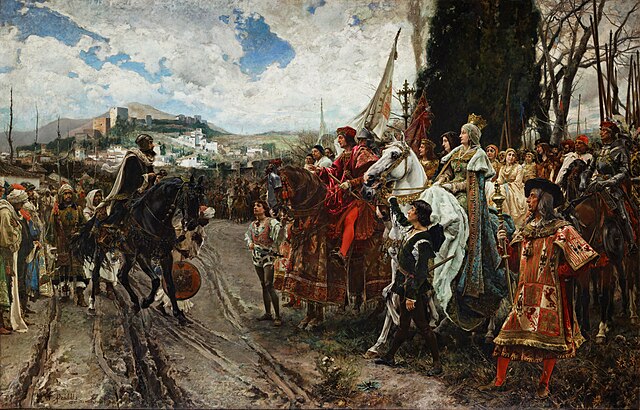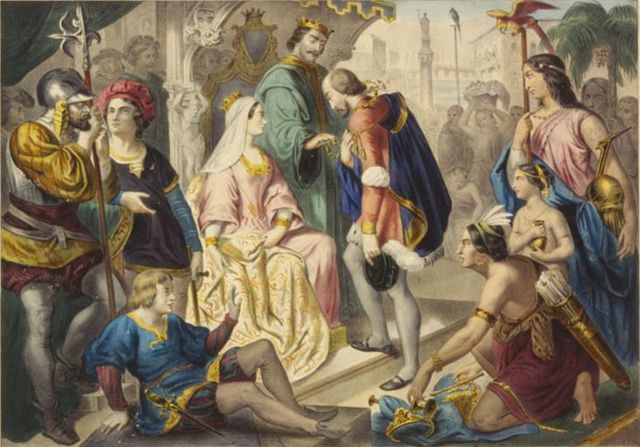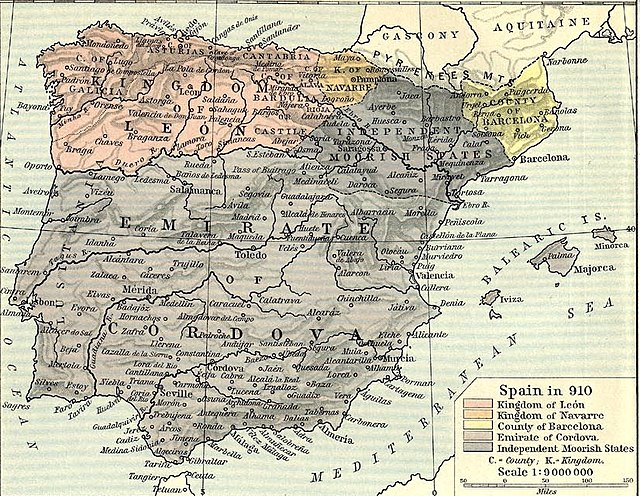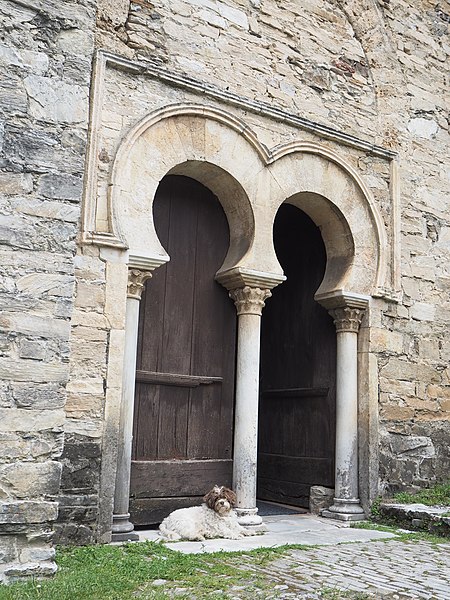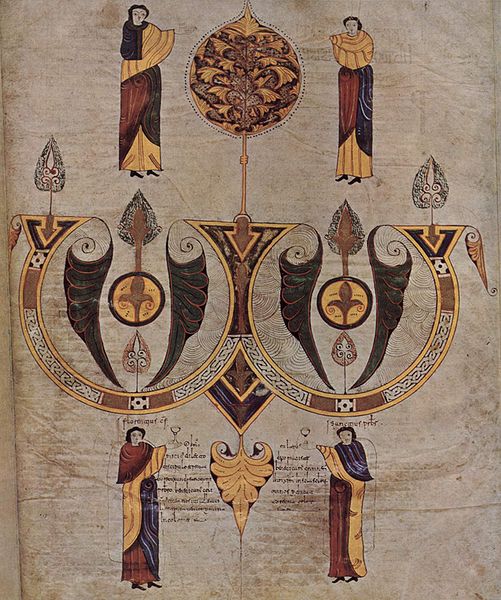The Crown of Castile was a medieval polity in the Iberian Peninsula that formed in 1230 as a result of the third and definitive union of the crowns and, some decades later, the parliaments of the kingdoms of Castile and León upon the accession of the then Castilian king, Ferdinand III, to the vacant Leonese throne. It continued to exist as a separate entity after the personal union in 1469 of the crowns of Castile and Aragon with the marriage of the Catholic Monarchs up to the promulgation of the Nueva Planta decrees by Philip V in 1715.
Equestrian heraldic of King John II of Castile in the Equestrian armorial of the Golden Fleece 1433–1435. Collection Bibliothèque de l'Arsenal.
The Surrender of Granada (Francisco Padilla, oil on canvas, 1882)
Columbus and the Catholic Monarchs (The return of Columbus)
"The Comuneros Padilla, Bravo and Maldonado in the Patíbulo", by Antonio Gisbert, 1860.
The Kingdom of León was an independent kingdom situated in the northwest region of the Iberian Peninsula. It was founded in 910 when the Christian princes of Asturias along the northern coast of the peninsula shifted their capital from Oviedo to the city of León. The kings of León fought civil wars, wars against neighbouring kingdoms, and campaigns to repel invasions by both the Moors and the Vikings, all in order to protect their kingdom's changing fortunes.
Alfonso the Great (848-910), king of León, Galicia and Asturias
The new kingdom of León, 910
Mozarabic church of Santiago de Peñalba
Codex biblicus legionensis

